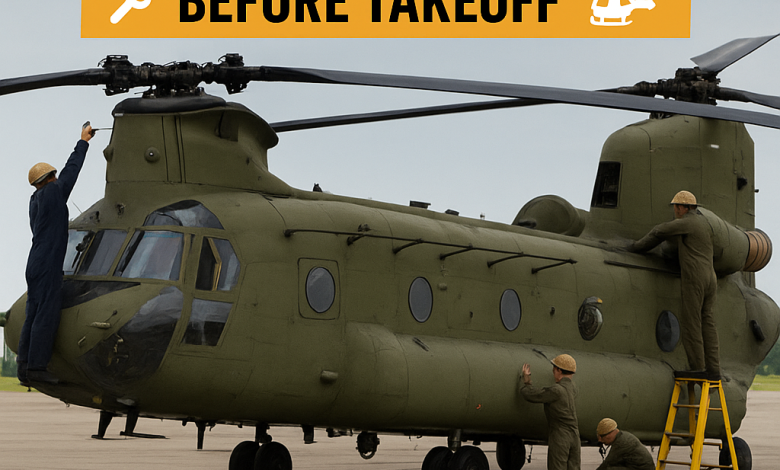Chinook Helicopter Maintenance & Repair: What Happens Before Takeoff

Before a Chinook helicopter ever lifts off the ground, it undergoes a meticulous maintenance and repair process designed to ensure safety, performance, and reliability. The Chinook, known for its tandem-rotor design and heavy-lift capabilities, is a critical asset in military and civilian operations alike—but it requires constant care.
Pre-Flight Inspection
Maintenance begins with a thorough pre-flight inspection. Technicians check the rotor systems, engines, hydraulic systems, and avionics. Every bolt, joint, and fluid level is carefully examined. Any irregularities, from minor leaks to worn-out components, are immediately flagged.
Scheduled Maintenance
Chinooks follow strict scheduled maintenance cycles, often defined by flight hours. These checks range from basic visual inspections to detailed mechanical and electronic system diagnostics. Scheduled maintenance includes:
-
Engine and Transmission Checks: Ensuring turbines, gearboxes, and driveshafts are operating optimally.
-
Hydraulic System Servicing: Checking for leaks and pressure levels to maintain rotor responsiveness.
-
Flight Control Systems: Verifying that pilot inputs match system outputs precisely.
-
Electrical and Avionics Testing: Inspecting navigation, communication, and weapon systems (if applicable).
Repairs and Replacements
If any component shows wear or damage, repairs are conducted immediately. Common repairs include replacing rotor blades, bearings, sensors, or hydraulic lines. All replacement parts must meet strict manufacturer and military specifications.
Safety First
Safety checks are repeated after every repair. Ground tests, including engine runs and rotor spin-ups, ensure the Chinook can handle the demands of takeoff and flight. Only after every system passes inspection is the helicopter cleared for operation.
Why It Matters
This rigorous maintenance process is not just protocol—it’s essential. The Chinook’s missions, from transporting troops and cargo to emergency evacuations, demand uninterrupted reliability. Any failure in flight could have catastrophic consequences.
Conclusion
The next time a Chinook rises into the sky, it’s the result of hours of careful inspection, maintenance, and repair by highly trained technicians. Each step, from pre-flight checks to engine diagnostics, is a critical part of ensuring that this remarkable helicopter is ready for action.




